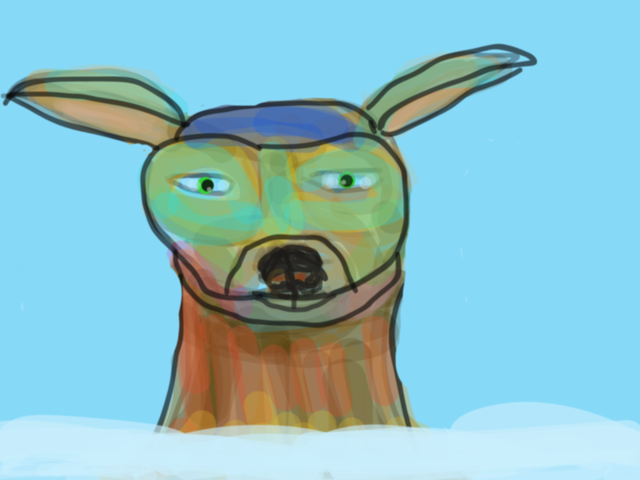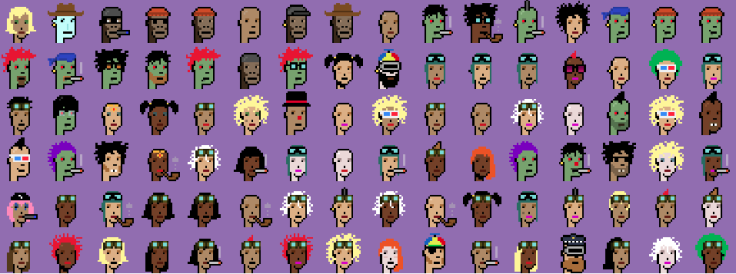From CryptoPunks to Decentraland: The work of art in the age of blockchain revolution
The Rare Digital Art Festival, which took place in New York City last week, was packed to the rafters.

In his seminal essay, "The Work of Art in the Age of Mechanical Reproduction", philosopher Walter Benjamin talks about a quasi-religious aura attached to works of art that hang in galleries. In his critique of modernity, he notes that from a photographic negative one can make any number of prints, to ask for the "authentic" print makes no sense.
Benjamin was wrong of course. These days, people do want to own the negatives of photographs, or original prints, especially signed ones. And today an indelible watermark of authenticity and ownership can be stamped on digital items.
The Rare Digital Art Festival, which took place in New York City last week, was packed to the rafters. The provenance of its contents are engineered using tamper proof ledgers, cryptographic signatures, hashes, digital wallets and blockchains.
Organiser "Tommy Nicholas, Chairman of Rare Art Labs explained that the event brought together a crypto art community that had been quietly growing for some time. Included were things like rare instances of the internet frog meme Pepe, that live on the Counterparty platform; Decentraland, a kind of blockchain-based Second Life; collectable card game Spells of Genesis; and CryptoKitties, which recently thrust the crypto collectible world into the blockchain mainstream.
Nicholas said: "We decided to have an event in New York so we could meet each other and people can meet us and learn about this topic. It took on life of its own; it was crazy. Originally we thought it would just be like maybe 20 or 30 people, just the creators, but we ended up having 600 RSVPs. We only had space for 180 people in the room at any given time; we didn't send out reminders and prayed people wouldn't show up."
The event attracted well over 300 people and finished with a live auction of some of the digital art pieces, which saw one sell for $39,000, and another for $22,000. The money raised by the sale was donated to the SPCA, which is a dog and cat charity in the US.
The concept of high value digital art can be hard to grasp. After all, it can be taken using a screen shot and displayed on your desktop for free. It helps to understand a bit about blockchains, which essentially provide a tamper-proof source of record; another factor is the way this stuff emerged from the gaming world. Blockchains have supplied gamers with a record of ownership of in-game items, which has allowed these things to be traded easily.
A good example of this is Spells of Genesis, which started out as a non-blockchain collectable card game, and which decided to put its cards on a blockchain so they could be traded. Tamogoshi-style CryptoKitties then came along and blew the roof off blockchain collectables, inundating Ethereum with requests to buy and trade them.
"What's really interesting is that people have applied that decentralised proof of ownership concept outside of gaming into collectibles like CryptoKitties," said Nicholas, "and into just straight up art like DADA which does digital drawings that people buy and sell the authentic versions of.

"You can still rip the image; anyone is going to be able to take the image and put on their desktop. But just like in the artworld where you can own the original painting, people want to own the authentic digital version."
Nicholas added that the owners of the original digital art can also enjoy the aura alluded to in Benjamin's essay. Also featured at his event is a company called Meural, which supplies digital picture frames to hang blockchain art.
"I can hang it in my apartment or my house and say this is the original one, and I can prove it to you. There's also extra utility in owning digital art. Owning the painting could also mean you get access to a broader gallery; it could mean you have the right to actually use the art and perhaps you have a limited copyright as well. So there can be extra value beyond just collecting."
Given the price of gallery space in places like Manhattan, blockchain artists are looking at virtual spaces where this community can come and view it. An obvious choice is Decentraland, which recently sold its first virtual world for a staggering $16m.
"This get layers deep, because one of the artists at the event is talking about putting up a digital gallery in Decentraland, where you can actually own particular parcels of land, which you buy with their cryptocurrency called MANA."
"Perhaps what she'll do is sell rare digital art from other blockchains or companies, and then if you buy from her you will also have a plot in Decentraland, where it shows that you own that piece of art."
Other decentralised art projects gathering a lot of interest included CryptoPunks, which are unique, little avatars limited to 10,000 and auto-generated by a script. The most expensive one sold recently for around $16,000.
Nicholas pointed out that while ownership of CryptoPunks was always decentralised, there was still a centralised website where you actually viewed the punks and bought them. But the creators have since taken steps to make sure everything is decentralised.
"Most of the projects are either fully decentralised now or on a path to being fully decentralsied. In some cases the art itself is still is on central servers, but will be fully decentralised by the end of the year," he said.























